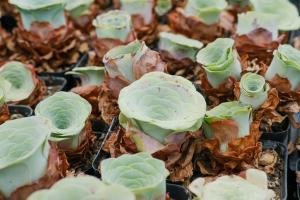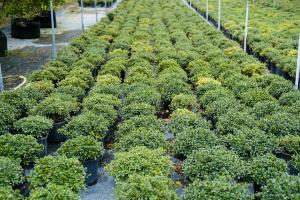Introduction
Plants are essential in our lives, providing us with oxygen and food, among other things. One of their most significant features is the presence of stomata, which allow for the exchange of gases and play a critical role in photosynthesis. In this article, we will explore the definition and function of stomata in a plant.
What is a Stomata?
A stomata is a small opening on the surface of a plant's leaves or stems that allows for gas exchange, particularly the exchange of carbon dioxide, which is used in photosynthesis, and oxygen, which is a by-product of photosynthesis. The stomata also allow for the release of water vapor through a process known as transpiration, which helps maintain the plant's water balance.
Structure of a Stomata
A typical stomata consists of two specialized cells, known as guard cells, which flank the pore or opening. The guard cells can change shape, allowing the opening to enlarge or decrease in size, thus regulating the rate of gas exchange and water vapor loss. In addition to guard cells, the stomata also have subsidiary cells that provide structural support and aid in the function of the guard cells.
Function of Stomata
Stomata are critical for the survival and growth of plants. Through the exchange of gases, stomata facilitate the process of photosynthesis, which involves the absorption of carbon dioxide, the release of oxygen, and the production of glucose, which is used as an energy source. Without stomata, plants could not produce the necessary oxygen and food, which would have catastrophic consequences for the environment and all living organisms.
In addition to their role in gas exchange, stomata also play a critical role in regulating water loss from the plant. During hot and dry conditions, the guard cells close the stomata to reduce water loss and prevent dehydration. Conversely, during favorable conditions, the guard cells open the stomata to allow for the entry of carbon dioxide and the release of oxygen and water vapor.
Conclusion
Stomata play a critical role in the survival and growth of plants. Through the exchange of gases and regulation of water loss, stomata facilitate the process of photosynthesis, which is essential for the production of oxygen and food. Understanding the structure and function of stomata is vital for enhancing our understanding of plant biology and improving agricultural practices.

 how many times do yo...
how many times do yo... how many planted tre...
how many planted tre... how many pine trees ...
how many pine trees ... how many pecan trees...
how many pecan trees... how many plants comp...
how many plants comp... how many plants can ...
how many plants can ... how many plants and ...
how many plants and ... how many pepper plan...
how many pepper plan...






























